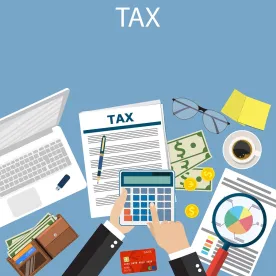As the end of year approaches, our thoughts turn to the holidays…and year-end tax planning. Especially in this year where there have been numerous disruptions, it is valuable to set aside some time to review company actions from a tax perspective. The following list outlines a few items that we believe companies should review before the holidays. This is not an exhaustive list and many of these items may not even require action. However, reviewing this list might be helpful in preparing for the anticipated tax changes to come in 2021.
-
Review Losses and Gains. Losses and gains should be carefully analyzed. Companies may wish to complete sales of certain assets to trigger gains or losses in a particular tax year to maximize their company position along with potentially arbitraging tax rates (which may be subject to change).
-
Analyze Book and Fair Market Value. Asset values should be reviewed in light of current market conditions. Depressed asset levels due to the pandemic might allow for the efficient transfer of assets that may become highly appreciated at a later date.
-
Consider Accelerating AMT refunds. When the Tax Cuts and Jobs Act (TCJA) repealed the corporate Alternative Minimum Tax (AMT), it allowed corporations to claim all their unused AMT credits in the tax years beginning in 2018, 2019, 2020 and 2021. The TCJA accelerates this timeline, allowing corporations to claim all remaining credits in either 2018 or 2019. This gives companies several different options to file for quick refunds.
-
CARES Act Carrybacks. The Coronavirus Aid, Relief, and Economic Security (CARES) Act brought back a provision allowing businesses to use current losses against past income for immediate refunds. Net operating losses arising in tax years beginning in 2018, 2019 and 2020 can be carried back five years for refunds against prior taxes. These losses can even offset income at the higher tax rates in place before 2018. Consider opportunities to accelerate deductions into a loss year to benefit from this rate arbitrage and obtain a larger refund. C Corporations make Net Operating Loss (NOL) refund claims themselves, but pass-through businesses like partnerships and S Corporations pass losses onto owners, who can make such refund claims. Please note, any accounting method changes must be made by the end of the year.
-
CARES Act Payroll Tax Deduction. The CARES Act payroll tax deduction is a decision all of its own and an example of the possibilities to be evaluated when looking at the timing of income and expenses. Under the CARES Act, employers may defer paying their 6.2% share of social security taxes for the rest of 2020. Half of the deferred amount is due by December 31, 2021, with the other half due by December 31, 2022. This provides a great liquidity benefit, but taxpayers should consider the impact on deductions in light of other government programs and before the end of the year. Businesses generally cannot deduct their share of payroll taxes until paid. For most businesses, the value of deferring the actual payment is worth also deferring the deduction, but there may be some benefits for paying early to take the deduction in 2020, such as increasing losses for the rate arbitrage benefits discussed above.
-
Payment of Compensation. Especially for smaller companies, business owners will want to review with their accountant the timing of payment of any bonuses, distributions, and dividends. Given the potential for significant tax changes in the coming year and beyond, the conventional wisdom may be to accelerate income. This may be correct, but business owners should carefully analyze this issue both from a company and a recipient standpoint.
-
Evaluate Types of Compensation. Business owners should also think about how compensation flows through their entity. For example, an employee may wish to accelerate income to avoid a coming increase in tax rates, while the company may wish to defer the corresponding deduction. A business owner’s interests as an “employee” might even be different from its interests as manager or president of the company. Business owners may seek to limit their exposure to higher individual tax rates, and a potential increase in social security taxes on wages, through receiving compensation through S Corporation dividends (which are not subject to employment taxes). Alternatively, business owners may seek re-organization or elect to be taxed as a C Corporation, to reduce their personal exposure to potential increased tax liability.
-
Timing of Income and Expenses. With a pass-through entity, the traditional strategy of deferring income into next year while accelerating deductible expenditures is appropriate if the company expects to be in the same or lower tax bracket next year. If the company expects to be in a higher tax bracket in 2021 (which could be the case due to the results of the presidential election or additional aid ideas), it may wish to evaluate taking a more nuanced, or even the opposite approach, by accelerating income into this year (if possible) and postponing deductible expenditures until 2021.
-
PPP Timing and Controversy. As of the date of this article, Congress and the IRS have not seen common ground on whether the expenses covered by the CARES Act Paycheck Protection Program (PPP) funds will be deductible. Current IRS guidance suggests that they will not. If a company has substantial PPP forgiveness in play, it may wish to examine the timing of certain expenditures to prevent or defer taxable income.
-
Bonus Depreciation. At least for this tax year, 100% first-year bonus depreciation is available for qualified new and used property that is acquired and placed in service in the calendar year 2020. In other words, companies may immediately deduct the full cost of many types of investments. Companies should review all asset acquisitions, and the timing thereof, with bonus depreciation in mind. For example, if the goal is to maximize depreciation in 2020, then a company may wish to hurry acquisitions into this year. If a company wants to increase deductions in 2021, it might defer acquisitions to allow depreciation to be used in 2021.
-
Retroactive Refunds for Bonus Depreciation. The CARES Act also fixed a technical problem with bonus depreciation by expanding bonus depreciation to apply to a category of qualified improvement property (QIP). QIP appears to include almost any improvement to the interior of a building that is either owned or leased. The fix is retroactive, so a company can fully deduct qualified improvements dating back to January 1, 2018, which may offer relatively quick refunds.
-
Cancellation of Debt (COD) Relief. Companies should look at the impact of any debts that were forgiven and consider the income effects as well as when to trigger the income. Companies should be especially aware of their solvency at the time the income is triggered as that will be important to evaluating any available exclusions of income. For pass-through entities, this solvency and tax impact on the members/partners will be crucial.
-
Property Tax Issues. Both personal and real property taxes are assessed as of January 1. Companies should review these tax values and assessments and confirm whether those values are correct as well as prepare to contest them. Given COVID, many of these values may no longer be accurate and may present an opportunity to challenge assessments. The window for contesting these taxes is quite short and does not offer grace periods, so preparation in these matters should be undertaken as soon as possible.
-
Contribution Issues. Members and companies should look at capitalization and basis issues. If the company is anticipating a loss, it should consider whether the members have sufficient basis to absorb the loss. If they do not, a company could consider allowing loans or contributing to increase basis. Companies may also wish to encourage contributions for non-tax reasons such as meeting loan covenants or avoiding insolvency.
-
Section 199A Issues. Similarly, members and companies should look carefully at managing the flow of income from a Section 199A perspective. For example, Section 199A allows taxpayers to deduct 20% of qualified business income from a pass-through entity, such as a partnership or S Corporation. The deduction for income from a service business is limited if the taxpayer’s income exceeds $163,300 ($326,600 in the case of married taxpayers filing a joint return). If the member’s income exceeds the limitation, the member may be able to increase his retirement plan contributions or take other proactive measures to reduce his taxable income below $163,300 before year-end.
These planning issues are not exhaustive. We recommend that businesses take a look at these issues and consider whether changes are needed.





 />i
/>i
